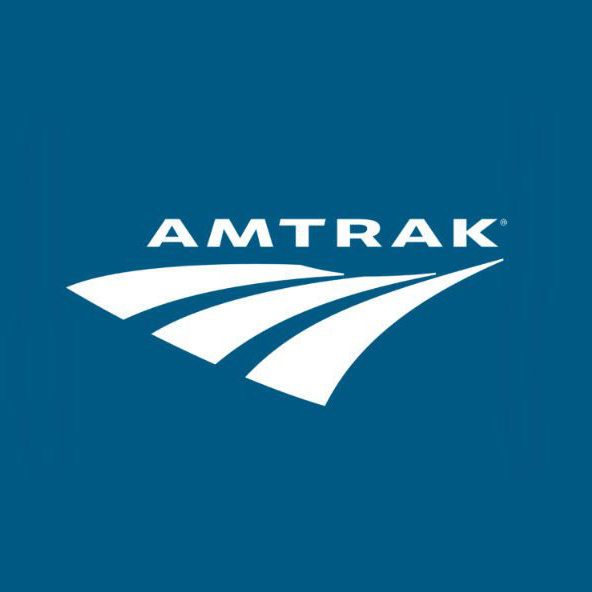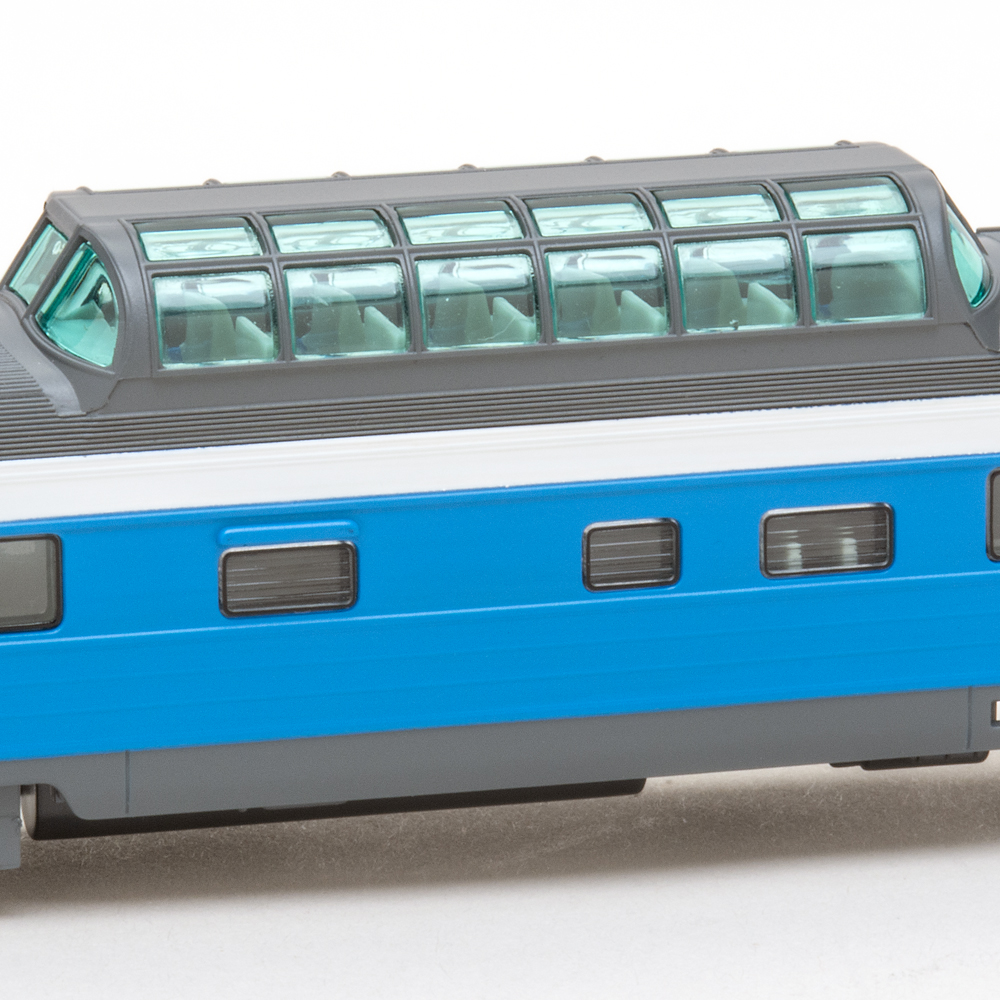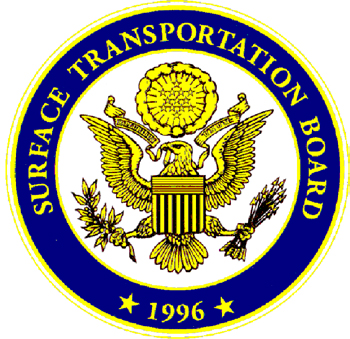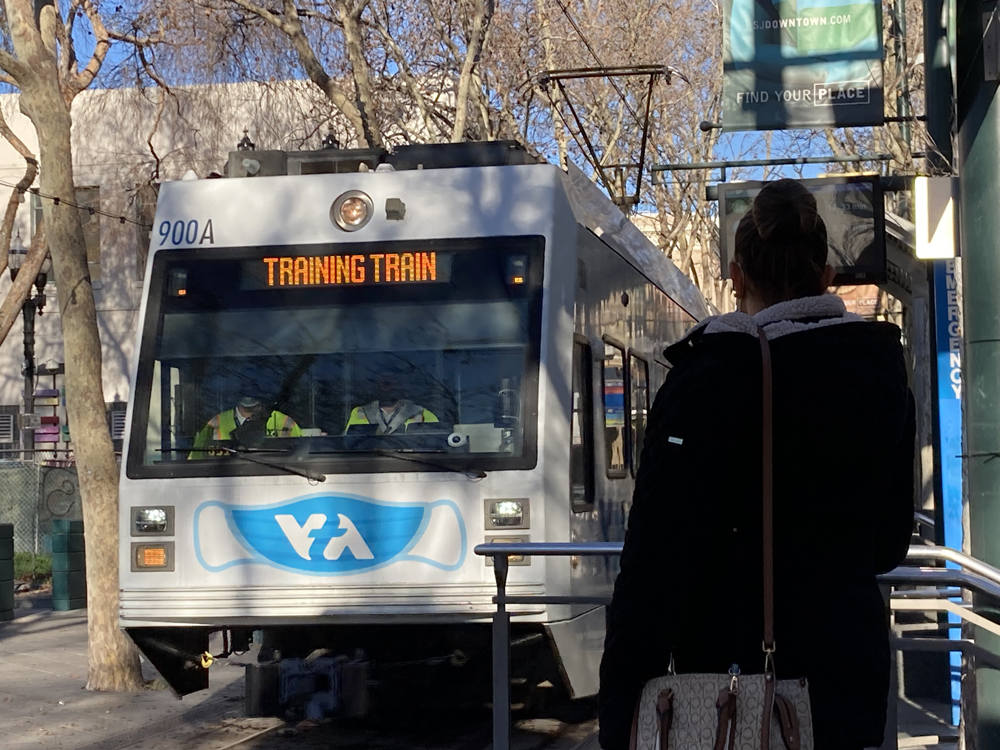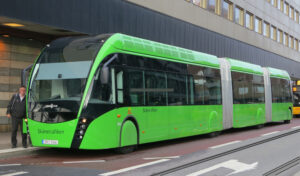
While hard-hit transit agencies are struggling to find money to keep trains running and undertake construction projects, a Canadian entrepreneur believes he has a new solution.
Steve Ostrowski says he’s “in the good idea business.” He’s started companies and developed products ranging from snowmobile shock absorbers to deck awnings, and now he wants to reinvent light rail.
The way Ostrowski sees it, light rail is attractive but expensive to build, and new lines take years to make their way through environmental reviews, funding, and construction. Bus routes and bus rapid transit are cheaper to develop but may not attract riders out of their cars. So, he wants to blend the two modes.
He calls it ultra-light rail or ULRT. He proposes putting a bus on steel wheels where it can run on rails but retain the rubber tires to drive off-rail for more flexibility. Think of a Hi-Rail vehicle that’s a city bus.
Instead of traditional street-running or a dedicated right-of-way for trains, the lighter weight of a bus enables a less costly roadbed.
Rails are set into a 12-inch wide concrete channel, which provides clearance for the road wheels and tires. Where rail ends, the channel slopes up, bringing the rubber tires into contact with the roadway. From there, the operator drives to the next rail segment or can go off-route as needed.
Ostrowski envisions this system to be all-electric. Using off-the-shelf electric buses from existing manufacturers, the running gear would be modified to add steel wheels inboard of the road wheels.
About half the batteries will be replaced with ultracapacitors, which enable flash charging. Every three miles, an overhead charger would contact the vehicle at a scheduled station stop and recharge the bus in as little as a minute, enough to get it to the next charging station, eliminating overhead wires. Regenerative braking also recharges the capacitors along the way.
Ultracapacitors have advanced in recent years and are already in use in transportation, energy storage systems, laptops, and wind turbines. They charge almost instantly, are long-lasting and much lighter than lithium batteries.
“What’s in it for the city is the lowest carbon footprint of any technology out there,” Ostrowski says. “It also operates at a lower cost.” He asserts that the construction timeline is much shorter than traditional light rail and avoids most environmental reviews.
Ostrowski has filed a provisional patent application and will make a full patent application in May. Based in Ontario, Canada, his firm, Municipal Transit Solutions (MTS), has made proposals to Ontario’s Metrolinx, the city of Albany, New York, and spoken with other municipalities. They haven’t got any takers yet, but he’s planning to build a demonstration site on 10 acres to showcase his idea to wary buyers.
MTS is partnering with Canada’s RA Engineering, which has been involved in the Hurontario LRT project in Mississauga, Ont., and the Toronto subway. Ostrowski explains, “RA Engineering will be the lead firm in the MTS consortium that actually designs, finances, engineers, and manages construction of our projects.”
The company proposes two types of service. Larger 40 to 65-foot buses would operate station to station along the route while shorter, 24-foot vehicles would pick up and drop off riders on demand, much like an airport shuttle. They would then join the rail route to transfer passengers at a regular station stop.
Given the changing needs of riders and the financial setbacks transit agencies are facing as a result of the pandemic, a lower-cost, more flexible blended-mode technology could provide an attractive alternative to current choices.
“Where I see it working best is in suburban settings, connecting the outer suburbs to the city core,” Ostrowski tells Trains News Wire.






